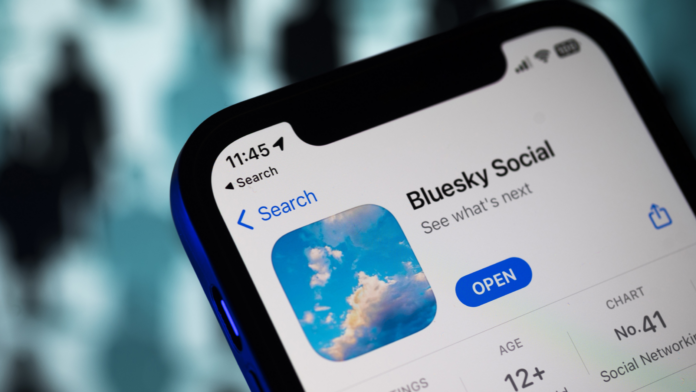In the evolving landscape of social media, the search for alternatives often leads users to explore new horizons. Bluesky, an emerging platform conceptualized by former Twitter CEO Jack Dorsey, has garnered attention as a decentralized social app aiming to redefine the social networking experience.
Bluesky, still in its invite-only beta phase, has generated significant interest, drawing comparisons to existing alternatives like Mastodon, Post, Pebble (now defunct), and Spill. However, its exponential growth, outpacing many contenders including Meta’s Threads, has marked its rise in popularity within the decentralized social media sphere.
Riding on a wave of anticipation and curiosity, Bluesky has surpassed a million users, offering a glimpse into a potential alternative to Twitter’s conventional structure. While the platform thrives amidst the buzz, echoing previous trends like the Clubhouse phenomenon, its sustainability remains a point of speculation.
Here, we delve into the core aspects of Bluesky, shedding light on its features, functionalities, and the buzz surrounding this decentralized social networking phenomenon:
What is Bluesky?
Bluesky emerges as a decentralized social app envisioned by Jack Dorsey during his tenure at Twitter. The platform is structured akin to Twitter, boasting a familiar user interface and community-specific moderation. Developed alongside Twitter, Bluesky operates on the AT Protocol, an in-house open-source framework, providing transparent insights into its construction and ongoing development.
Navigating Bluesky
Once granted access via invitation, users create a handle represented as @username.bsky.social, coupled with a bold display name. The platform mirrors Twitter’s simplicity, allowing posts of 256 characters, accommodating photos, interactions such as replies, retweets, and likes, while enabling reporting, sharing, and copying of posts.
The app’s functionality centers around a timeline displaying updates from followed accounts, offering a personalized “Discover” feed and “Who to Follow” suggestions, fostering engagement and exploration.
Joining Bluesky
Access to Bluesky operates on an invitation system, rewarding active users with invitation codes to extend to others. Bluesky envisions this approach as a community-building tool, fostering a culture of trust and collaboration among its user base.
User Base and Notable Figures
Bluesky’s growth trajectory led to a substantial user base, including notable figures like Representative Alexandria Ocasio-Cortez, Neil Gaiman, Chelsea Manning, and media personalities like NPR’s Taylor Lorenz and Jake Tapper, shaping a diverse and vibrant community.
Features and Differentiation
While resembling Twitter in many aspects, Bluesky lacks some advanced features like DMs and account-listing tools. Furthermore, its decentralized protocol distinguishes it from Twitter’s centralized infrastructure.
Business Model and Decentralization
Bluesky operates on an invitation-only model, aiming to sustain its network without resorting to advertising. The platform explores alternate revenue streams, including custom domains and services, while focusing on decentralized development through the AT Protocol.
Security and Customization
Recent updates bolstered Bluesky’s security with email verification, enhancing its competitiveness against larger networks. Custom algorithms known as “custom feeds” allow users to curate their content experience.
Platform Expansion and Engagement
Bluesky caters to both iOS and Android users, expanding its reach through a web interface and a third-party app called GraySky, designed to enhance user accessibility.
Challenges and Controversies
Bluesky navigates challenges surrounding moderation, battling issues related to user protection and content oversight. Instances of controversies, including moderation concerns and user strikes, underscore its ongoing evolution.
Comparison with Mastodon
While sharing architectural similarities with Mastodon, Bluesky’s user-friendly interface contrasts with Mastodon’s perceived complexity, positioning itself as a more accessible alternative.
Ownership and Leadership
Jack Dorsey’s funding and initial involvement notwithstanding, Jay Graber leads Bluesky as CEO, contributing to its development and strategic direction.
Unique Culture and Terminology
Bluesky’s users have adopted unique terms like “skeets” for posts, although this nomenclature faces resistance from certain circles within the platform.
Tackling Misinformation and Technical Advancements
Bluesky’s ongoing updates focus on mitigating misinformation by flagging misleading links, emphasizing continual technical advancements and user-centric features.
Unraveling the ‘Hellthread’
Bluesky’s ‘hellthread’ incident unfolded as a mishap involving an overwhelming response to a single thread, causing disruptions and highlighting platform scalability challenges.
Future Outlook
As Bluesky navigates its developmental phase, addressing challenges and fostering community engagement, its trajectory and impact on the decentralized social media landscape remain topics of intrigue.
Bluesky’s ascent marks an intriguing phase in the social media narrative, promising a decentralized and community-driven alternative, reshaping the way we connect and interact online.












